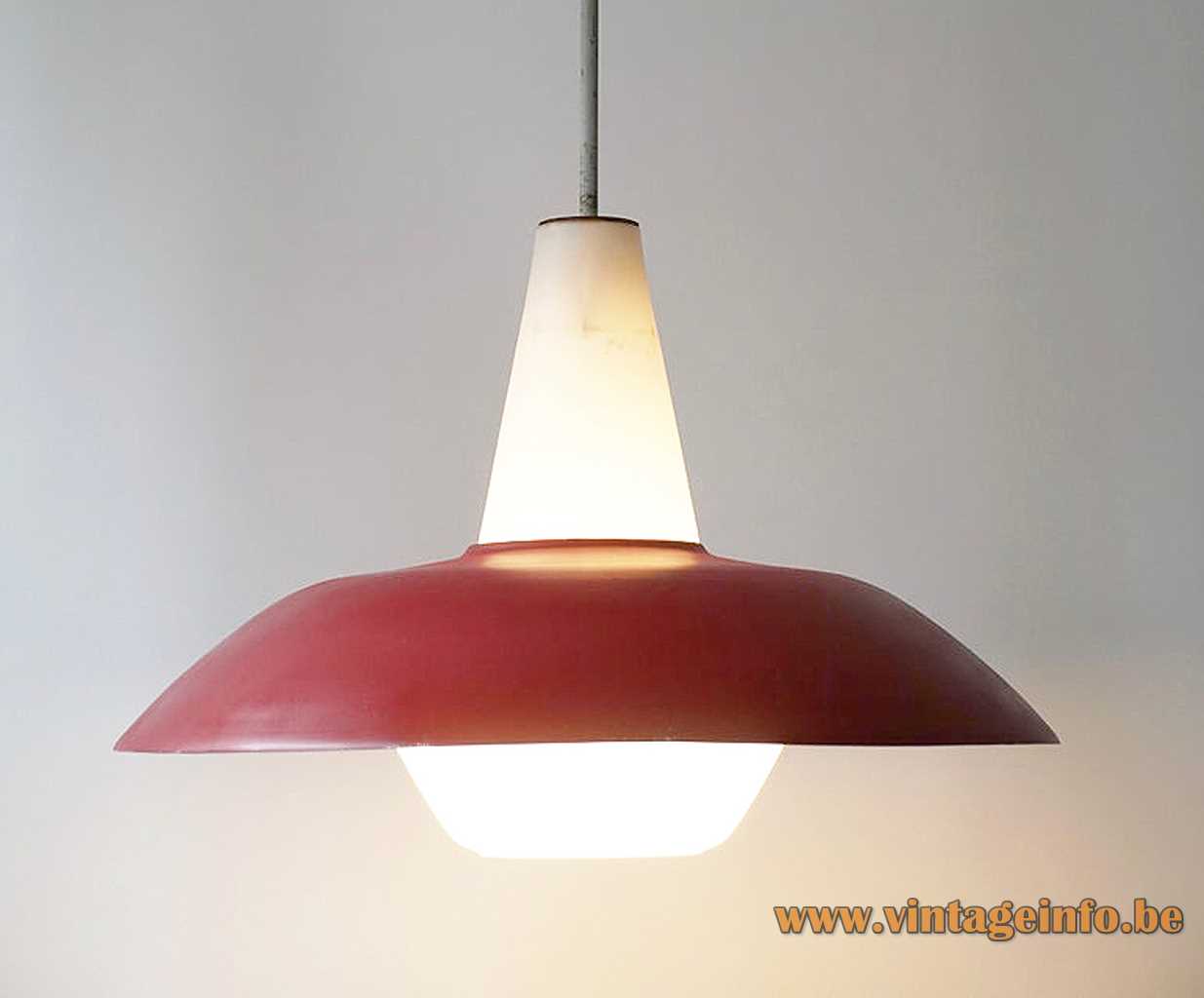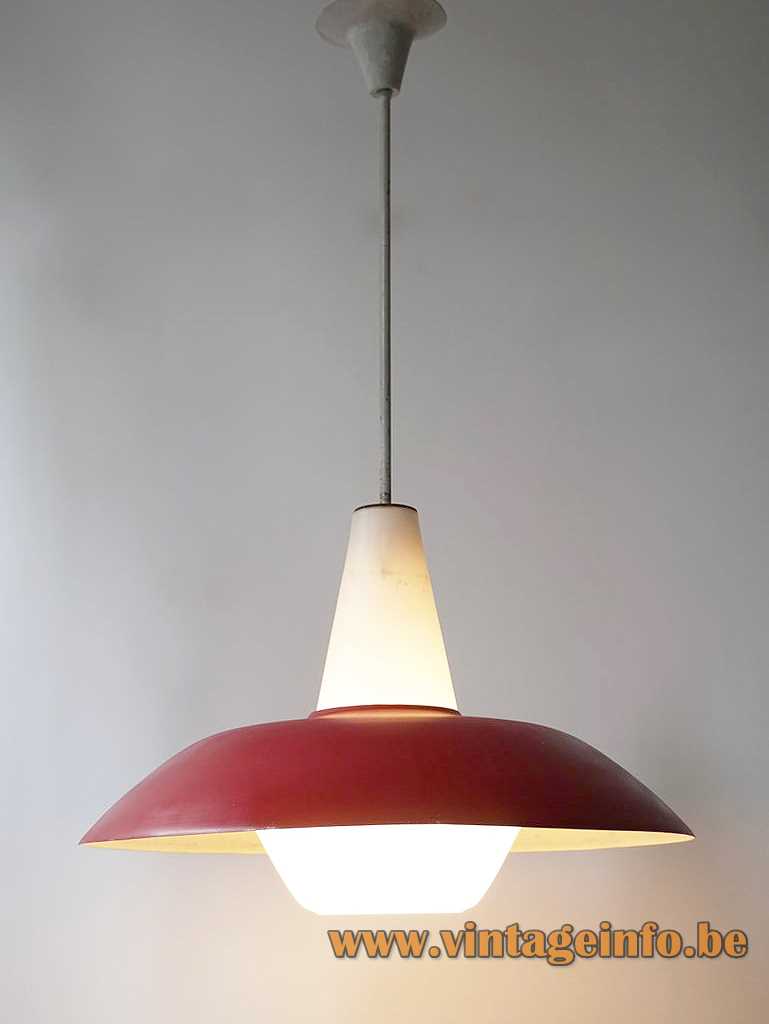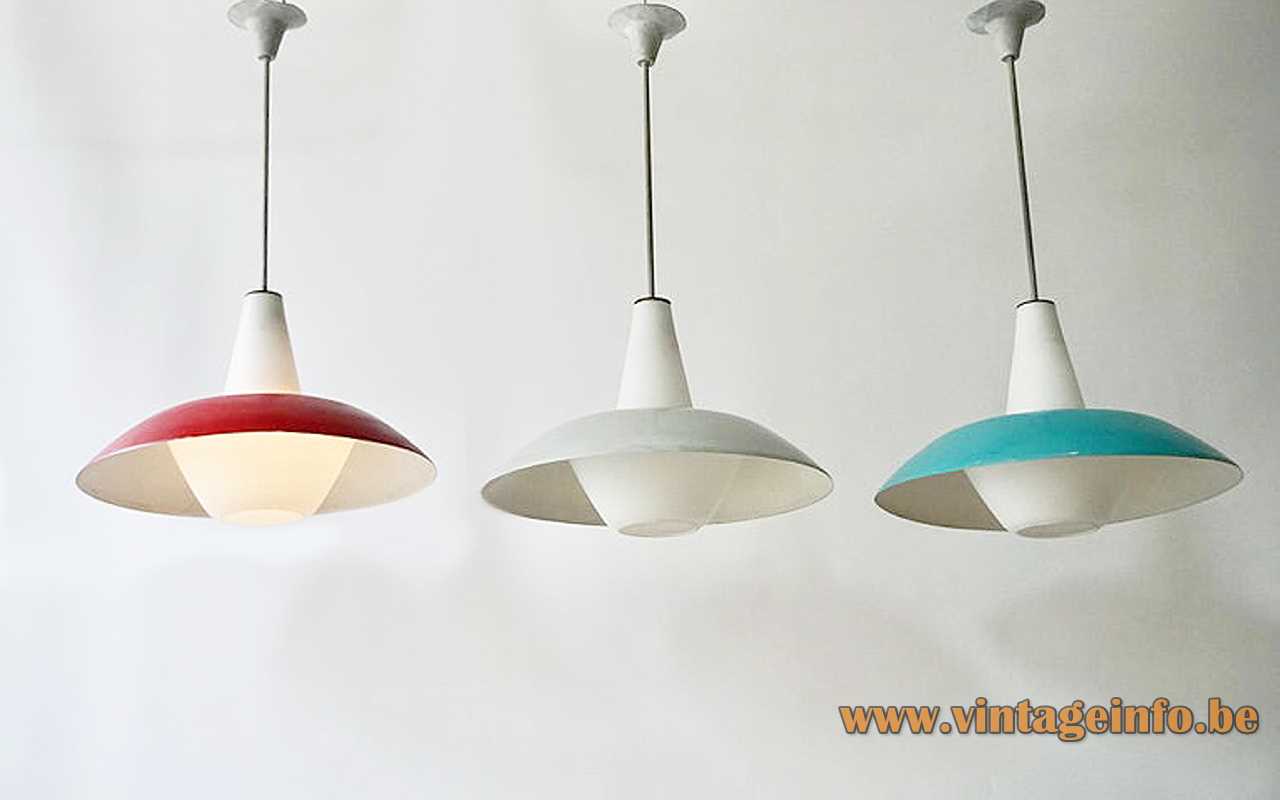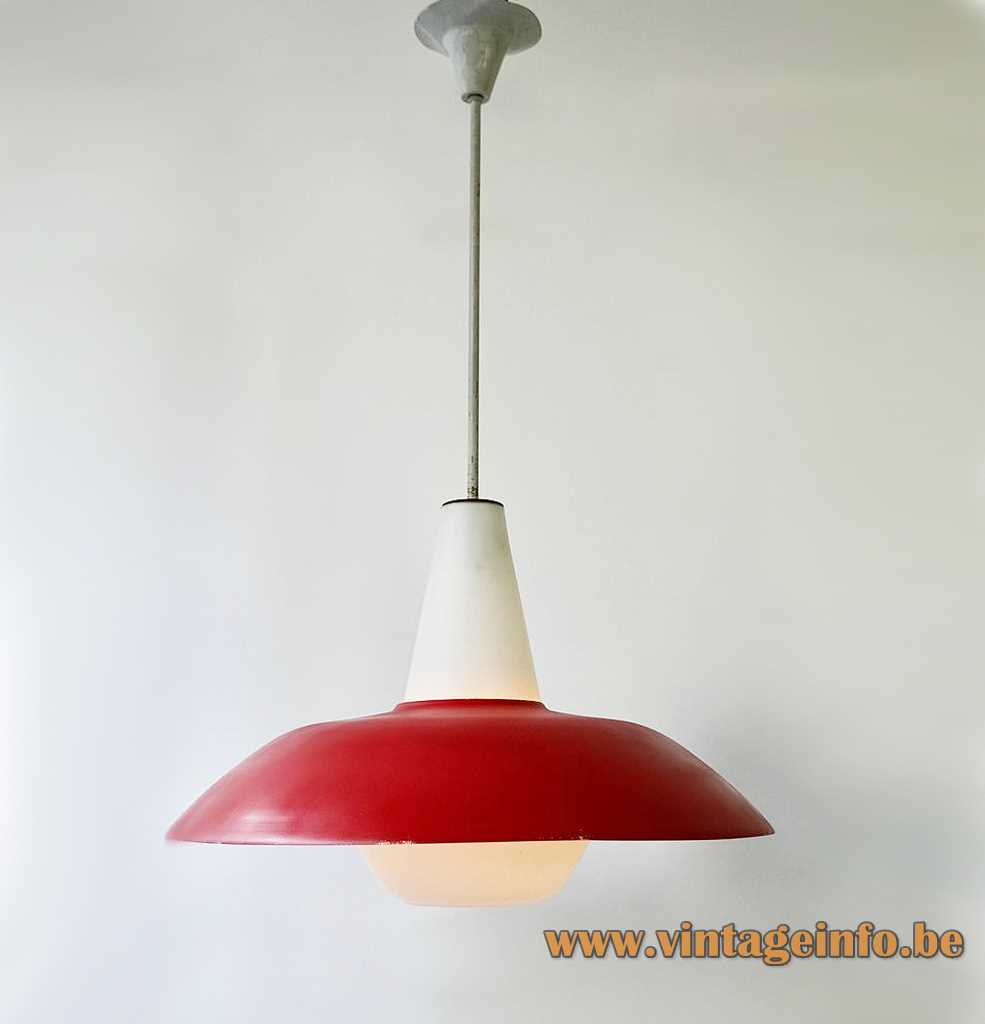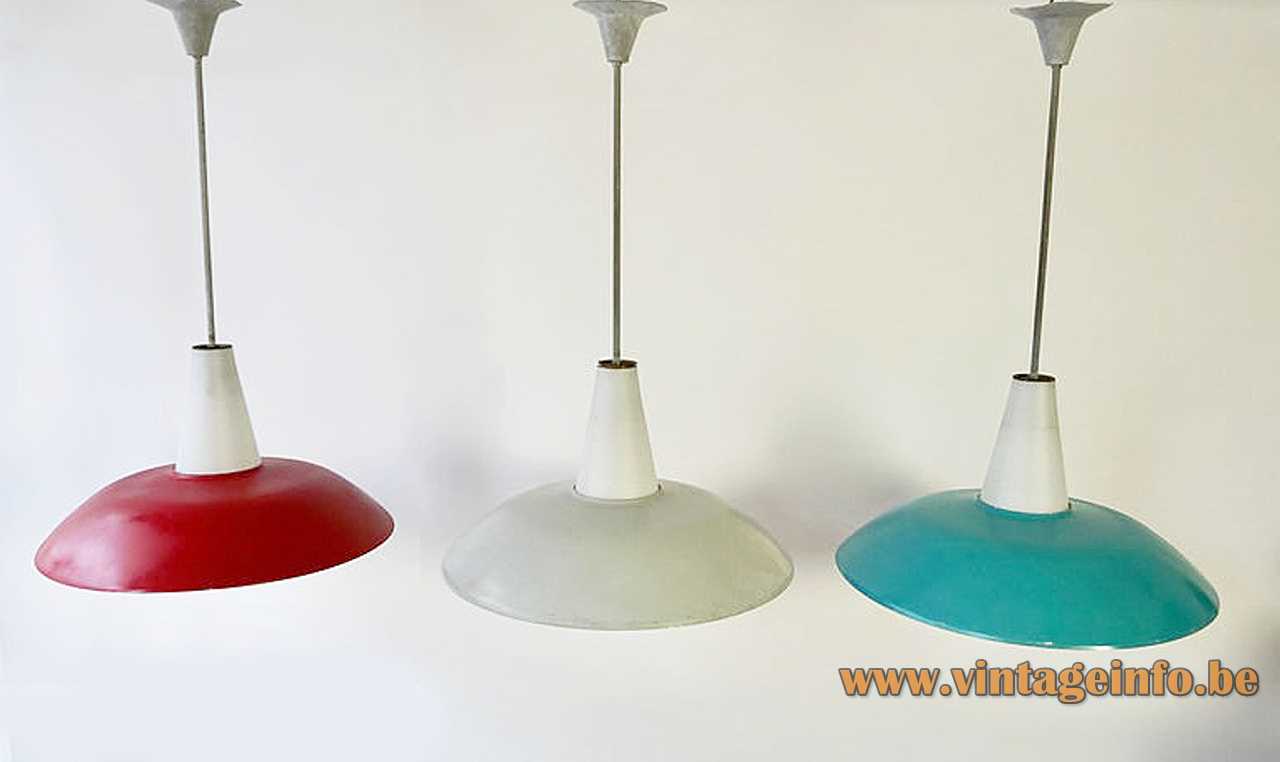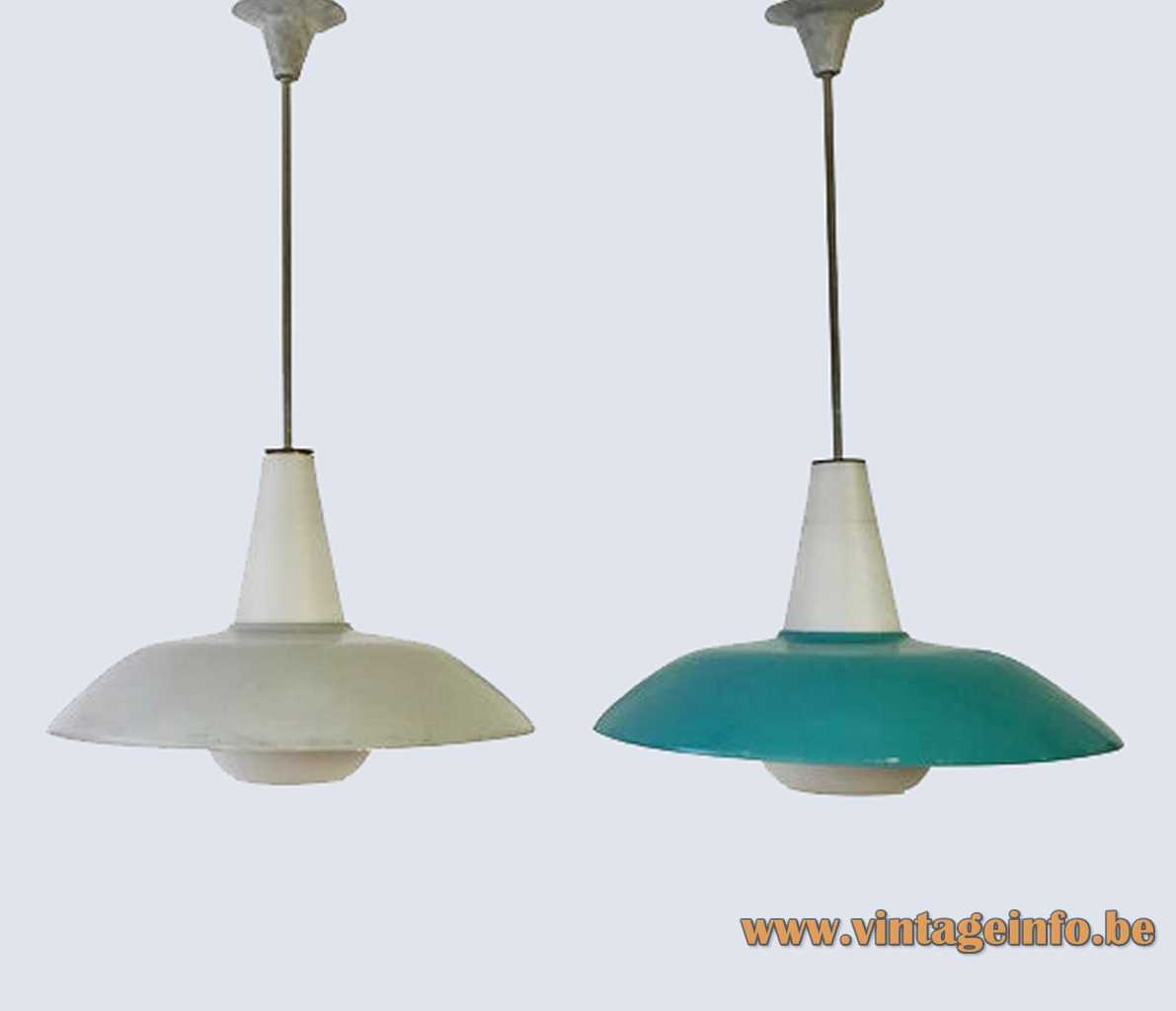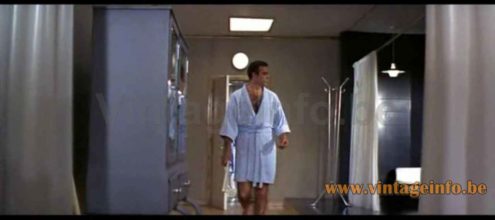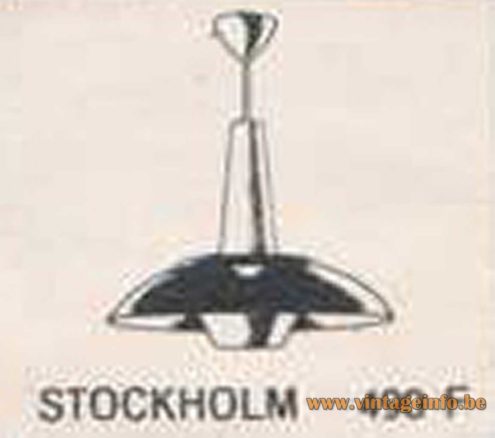Philips 1950s Pendant Lamp Stockholm
Materials: White opal glass diffuser with a satin finish. Red painted metal (iron) round lampshade. White painted iron rod and parts. Aluminium canopy. Bakelite E27 socket.
Height: 80 cm / 31.49”
Width: ∅ 50 cm / 19.68”
Electricity: 1 bulb E27, 1 x 100 watt maximum, 110/220 volt.
Any type of light bulb can be used, not a specific one preferred.
Period: 1950s, 1960s – Mid-Century Modern.
Designer: Louis Christiaan Kalff – attributed.
Manufacturer: Philips, Eindhoven, The Netherlands.
Other versions: This Philips 1950s pendant lamp Stockholm exists in many colours and variations. Philips produced a whole range of these lamps, all a bit different. Some of these type of lamps were sold with or without metal lampshade.
Most of the lamps made by Philips are designed by the internal design-team of the company which was headed by Louis Kalff at that time.
Koninklijke Philips N.V.
Inspired by the fast-growing electricity industry and the promising results of Gerard Philips own experiments to make reliable carbon filaments, Frederik Philips (his father) financed the purchase of a modest factory in Eindhoven, The Netherlands in 1891. Frederik Philips was a Jewish banker based in Zaltbommel.
In 1895, after difficult first four years and near bankruptcy, Anton Philips joined the company. He was Gerard’s younger brother. With Anton’s arrival, the family business began to expand rapidly. The brothers changed their family business by founding the Philips corporation. They laid the foundations for the later electronics multinational.
A day before the German invasion in the Netherlands on 9 May 1940, the Philips family fled to the United States of America, taking a large amount of the company capital with them.
Operating from the US as the North American Philips Company, they managed to run the company throughout the war. After World War II the company was moved back to the Netherlands, with their headquarters in Eindhoven.
Louis Christiaan Kalff (Amsterdam, November 14th 1897 – Waalre, September 16th, 1976)
Louis Kalff was a pioneering industrial designer in the Netherlands during the first half of the 20th century. With a solid background including studies in sculpture, ceramics, furniture design and architecture, he began to work for the Philips company in 1924, department consumer electronics company marketing.
In 1929 he started a department for design of lighting products (LIBU – Lichtadviesbureau (Dutch for light consultancy). Louis Kalff was responsible for the lighting sections of the World Exhibitions in Barcelona, Antwerp and Paris.
As a freelancer, he also designed posters and advertising for the Holland America Line, Calvé, Zeebad Scheveningen, Holland Radio and others. Louis Kalff also designed book covers.
After World War II Kalff kept himself active in industrial design for Philips. After his retirement in 1960, Louis Kalff stayed with Philips as a consultant and architect. In 1961 he was given the direction and execution of the Evoluon building in Eindhoven. It was the last work of the light architect who almost worked for forty years at the Philips group.
Links (external links open in a new window)
The complete history of the company on the Philips website
The Evoluon building – Wikipedia
Website of the Philips Museum in Eindhoven
Louis Kalff – Wikipedia (only in Dutch)
James Bond Thunderball (1965 film – Wikipedia
James Bond Thunderball (1965 film – IMDb
Vintageinfo
Many thanks to Frank from Flowermountain.be for the pictures and the enthusiasm.
